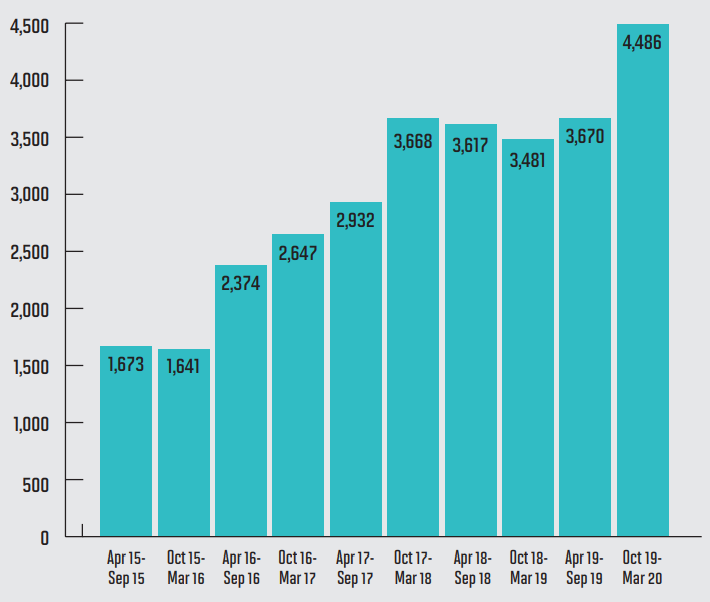Diversification remains a key consideration for brokers across Australia. But is it right for your brokerage? MPA talks to three leading voices in the field to get their insights

As the mortgage market in Australia continues to evolve, many brokers are recognising the increasing benefits of diversifying their businesses. Perhaps the most obvious is that diversification acts as insulation against the vagaries of the market; the commercial and residential markets tend to follow different cycles, and a lull in one can mean a boom in the other.
Being able to provide a broader palette of financial services enables a broker to better service their clients, turning their brokerage into something of a one-stop shop while also enhancing their own earning potential. For some brokers this means embracing commercial; for others it means a shift towards residential, or perhaps to entirely new areas of finance.
Why – and should I – diversify?
Cameron Poolman, CEO of OnDeck Australia, points out that a broker’s business is often a key personal investment, and to ensure it retains its value in the years to come, diversification will remain important, especially in light of the recommendations made by the banking royal commission in early 2019.
“Commissioner Hayne made recommendations which, if enacted, would have jeopardised the value of many brokers’ businesses,” says Poolman.
“This highlighted the need to diversify, and commercial lending is an obvious choice.”
“With so many people having to adapt, they will be looking to their broker to convey their needs and wants to the finance provider” Peter Vala, Thinktank
Poolman doesn’t believe there’s a one-sizefits-all approach to broking success, but he says there are three key considerations.
“First of all, set realistic goals around acquiring SME customers,” he says. “Social media is a powerful marketing force, but think about where small businesses are most likely to be – Facebook, Instagram or LinkedIn – then focus on those platforms. Secondly, get involved in the local SME community, and work every opportunity that comes into your sales pipeline. Last but not least, never lose your focus on great service. When a broker is seen to be delivering fast, efficient service, it goes a long way towards building loyal customers and referrals.”
Aarti Mason, senior manager, intermediaries at Heartland Seniors Finance, points to demographic reasons for diversification as well. Australian life expectancy is ranked among the highest in the world, and more and more Australians are spending longer in retirement. With this steady growth in the aging population, combined with their increased indebtedness and equity on entering retirement, plus stringent lending obligations for older customers looking for a traditional home loan, it is difficult for those aged 60 or older to consolidate debt, modify or upgrade their home or vehicle, or just afford a comfortable retirement, which cannot be done on the Age Pension alone.
“An equity release product such as a reverse mortgage can offer a tailored solution to older customers and keep a broker’s portfolio diversified, providing full service to your customer and potentially their older family members,” says Mason. “Additionally, a reverse mortgage gives customers financial freedom to release equity in their home without having to sell.”
Peter Vala, general manager – partnerships and distribution at Thinktank, believes the challenges of 2020 have strongly highlighted the benefits of diversification.
“It’s been a time when protecting the business, as much as growing it, has been critical,” says Vala. “Diversification helps you achieve both by spreading the risk of income from a particular market segment. It helps attract new customers and referral partners and generates additional revenue sources.”
Rather than all income being generated by home loans, for example, having other sources such as commercial property, personal loans and asset finance can shore up and strengthen a broker’s business, Vala explains.
“A wider offering of products and services is greater motivation for a customer to return to the originating broker to meet new financial needs,” he says.
Staying up to speed
Having the right tools and keeping up to speed with new products is also critical for brokers. Mason points to reverse mortgages as an example.
“A reverse mortgage is arguably one of the most heavily regulated consumer finance products. Therefore, we offer our brokers Diversifying the future of your brokerage specialised training and coaching on our product and policies, with our dedicated broker support team available to assist at any stage,” Mason says.

“We encourage our brokers to have the hard conversations at the start to ensure a smooth application process” Aarti Mason, Heartland Seniors Finance
“To increase the depth of knowledge in our broker network, we hold regular information webinars on product, policy and how to deal with the seniors market, to help enrich our brokers with relevant information that they can utilise to diversify their portfolio through writing reverse mortgages.”
But how does the client benefit from broker diversification? After all, to be worthwhile, an expansion of services needs to provide broader benefits for clients as well as brokers.
“From your client’s perspective,” Poolman explains, “it’s both reassuring and convenient to turn to the same broker who arranged their home loan when they are seeking business finance.”
The broker, he notes, is already familiar with the client’s background, which saves time during the data-gathering process. Diversifying into commercial finance cements the broker as a ‘one-stop shop’ that the client can turn to for all their financing needs.
“By serving the holistic needs of each client, brokers are more likely to experience repeat business and referral growth,” says Poolman.
In a time of instability, Vala says customers need relationships they can rely upon and trust. If brokers can fulfil all the needs of their existing customers, they’ll be in a strong position to solidify the relationship for the long term and become a valued advocate for the customer in the process.
“With so many people having to adapt, they will be looking to their broker to convey their needs and wants to the finance provider,” says Vala. “The last thing they want to do is to have to start up a new relationship with a broker because their existing one doesn’t offer the diversified solutions they require.”
Starting the diversification process Vala sees the first step to diversification as looking at your existing clients to identify those who are self-employed.
“Once you’ve done that, you can conduct a review with them to analyse their needs and wants for themselves and their business over the next 12–24 months, to see where you can assist,” he explains.
“Suggesting an introduction to the client’s financial partners – such as planners, accountants or commercial real estate agents – is also a great idea. It shows initiative and a commitment to all of you working closely together for the customer’s benefit.”
Vala also sees it as a matter of scale when taking your first steps towards diversification.
“When a broker is seen to be delivering fast, efficient service, it goes a long way towards building loyal customers and referrals” Cameron Poolman, OnDeck Australia

69%
of SMEs reported a decline in revenue due to COVID-19*
41%
of SMEs reported higher revenues in September 2020 than in August
37%
of SMEs expected revenues to increase over the next four weeks*
15%
of SMEs were hiring, an increase from 12% two weeks earlier*
“Our main advice is to start with smaller loans and gradually build your knowledge and experience from there,” he says. “
For example, concentrate on one product initially, like a commercial property loan, and then move to SMSF, asset finance and so on.”
Mason sees the most critical aspect of diversifying into an equity release product as ensuring that reasonable enquiries have been made into the customer’s financial situation. While the lending criteria for reverse mortgages does not look at income, expenses, assets and liabilities in the same way as a standard home loan, it is critical to ensure the impact of the loan on the customer’s future financial needs, including aged care and any planned bequeathments, and the impact of the loan on Centrelink entitlements.
“We encourage our brokers to have the hard conversations at the start to ensure a smooth application process,” says Mason. “Our dynamic and knowledgeable team are also available to assist brokers with any queries at every step of the way.”
Ultimately, Poolman believes brokers are well placed to nurture the trust of residential clients, with the promise of recommending the loan best suited to their individual needs.
“The same applies with business lending, so it’s critical for brokers to partner with a lender that understands SME financing needs,” he says. “But don’t be afraid to experiment either. Yes, we are in a changed world where some businesses are doing it tough while others are forging ahead, but there is plenty of opportunity right on your doorstep.”



